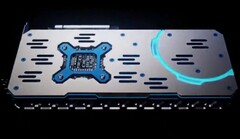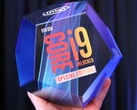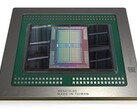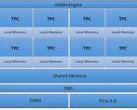UPDATE 8/2: Intel has reached out to us to clarify Raja Koduri's statement in this interview. From Intel:
"Raja was making the point that not all users will buy a $500-$600 graphics card, and that Intel strategy revolves around going for the full stack that ranges from Client to the Data Center. The $200 reference in the interview was an example of general entry pricing for Client dGPUs – and not a confirmation of Intel dGPU pricing. "
Intel also provided a transcription of Koduri's statement:
Not everybody will buy a $500-$600 card, but there are enough people buying those too – so that’s a great market.
So the strategy we’re taking is we’re not really worried about the performance range, the cost range and all because eventually our architecture as I’ve publically said, has to hit from mainstream [which starts around $200] all the way to Data Center class graphics with HBM memories which will be expensive.
We have to hit everything, it’s just a matter of where do you start? The first one? The second one? The Third one? And the strategy that we have within a period of roughly – let’s call it 2-3 years – to have the full stack.
ORIGINAL ARTICLE:
Intel is poised to enter the GPU market with its new Xe GPU architecture next year, and if recent details from an interview with Raja Koduri (senior vice president of architecture at Intel) are to be believed, the chipmaker may upend the entire GPU market.
In an interview with YouTube channel PRO Hi-Tech (which is in Russian), Koduri stated that Xe would use HBM, or high-bandwidth memory, for its VRAM. HBM is a denser form of video RAM that allows for much faster throughput and memory access than the traditional GDDR5 that has been in use for over a decade. Currently, AMD uses HBM2, a newer version of HBM, on its flagship Radeon VII GPU.
Perhaps more interesting is the other piece of information Koduri dropped about Xe: the price. Koduri mentioned that Intel’s GPU strategy is more focused on delivering a good product at a competitive price rather than raw performance. He stated that Xe would start at US $200 and that Intel would offer high-end models with a “higher amount” of HBM for data centers.
That “higher amount” statement makes it unclear if Koduri was saying that entry-level Xe GPUs would also have HBM. HBM is still quite expensive; it’s highly unlikely that a GPU with a $200 MSRP would carry HBM instead of cheaper GDDR5.
Of course, this should be taken with a heavy grain of salt. For one, while the above information is from Koduri, it’s translated from an interview that is dubbed in Russian. Translation errors may be skewing Koduri’s words a bit. Additionally, a single sentence from a 30-minute interview should not be taken for absolute truth. Koduri could simply be marketing Xe; the final product may not be able to deliver on a promise of HBM at $200.
We’ll know for certain when more details on Intel’s Xe GPU surface. Currently, Intel is planning to release Xe sometime in 2020.

























